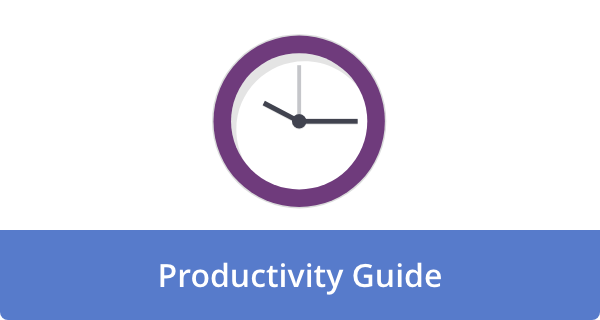

Taking a company to new levels of success and profit does not just happen by accident. It requires consistent and coordinated effort between departments, team members, leadership, and auxiliaries. If your organization does not work together as a whole and each team member is only out for themselves, the whole project will eventually fail. So, how do you create cohesion out of chaos or collaboration out of conflict? The answer may seem simplistic, but it often depends on how your organization communicates.
Effective communication in the workplace can transform your daily operations and outcomes. It promotes cooperation and helps team members build trust with each other so they find it easier to work toward a common goal. You can try many communication strategies, but meeting together regularly is a great way to start. Use shared calendars such as Calendar, Microsoft Calendar, and Google Calendar to simplify the task of scheduling meetings. As you learn to improve communication and collaboration with shared calendars, prepare to unlock these five company-wide transformational effects.
1. Enhance Team Coordination
Do your teams function in a way that seems disjointed and uncooperative? If so, it may indicate that individual team members feel unmotivated and disengaged. Other typical signs of disengagement include decreased productivity, frequent employee conflicts, and increased absenteeism. Often, these behaviors stem from frustration due to poor communication on a departmental or company-wide level. Many people have a hard time working well with others when they don’t know how they’re expected to contribute.
Enhanced team coordination is one of the many benefits of shared team calendars. These tools make centralized scheduling easy and instantaneous. If a manager wants to set up a meeting, they no longer have to send out individual invites or speak to each team member personally. Instead, they simply need to set up the meeting in the shared calendar and all invitees will receive an automatic notification. No one gets unintentionally left out or forgotten and everyone’s calendars get automatically updated with the newly scheduled meeting.
Team calendars banish confusion and frustration, two of the top outcomes associated with poor communication. They can also enhance team coordination by allowing members to set project deadlines, process time off requests, and balance personal and professional commitments. Team calendars can help co-workers feel more connected whether they work in the office or remotely.
2. Prevent Scheduling Conflicts
Scheduling conflicts occur when multiple meetings or project activities are expected to occur simultaneously. In many cases, these types of disputes arise because of poor communication or the inability to view individual team member schedules. Scheduling conflicts are common in companies across all industries, whether their employees work remotely or in the office. Anytime you bring a diverse team of people together, they will have conflicting personal or professional commitments.
Scheduling conflicts can disrupt project outcomes and lead to missed deadlines. They can also spark frustration and lead to poor morale. Utilizing a team calendar is one of the easiest ways to avoid unintentionally scheduling overlapping events. It will allow you to instantly see openings in employee schedules so you can schedule your meeting when it won’t cause any conflicts.
Despite your best efforts, you may not always be able to find a meeting time that works for all team members. If this happens to you, communicate the scheduling conflict with all involved. Then, you can work together to come up with a solution. The team member with the conflict may decide to cancel or reschedule the conflicting appointment. Or, they may be able to send another department member to your meeting instead.
3. Balance Assignments
In any workplace, it’s natural for managers to utilize some team members over others. Everyone’s personality is different; some employees are naturally more energetic and motivated than others. However, if you’re consistently doling out responsibilities to certain workers while taking it easy on others, you could unintentionally cause division and resentment. Eventually, your most utilized and productive employees may burn out and leave your company for fairer working conditions.
One great feature of shared calendars is that they make gauging each team member’s workload easy. For example, you might notice that one team member’s calendar shows a busy week full of meetings, deadlines, and appointments. Giving them another time-intensive task that week could cause frustration and overwhelm. Instead, you might delegate the task to someone whose week looks less chaotic.
Some team calendars allow color coding tasks based on the assignee. This feature can help you quickly understand team balance and see which employees may have an unequal workload. You can also analyze tasks by estimated time requirements to better understand workload distribution amongst your team members.
4. Save Time
Poor communication can be an epic time waster in the workplace. When employees aren’t clear about what to do, they’re more likely to wait for further instructions idly. A team calendar may take time to set up initially, but it will ultimately help you save time. It can improve team scheduling and coordination while ensuring everyone meets project goals and deadlines. It can also help you plan future projects and schedule team coordination meetings within minutes.
If a meeting invitee can’t make it to the scheduled meeting, they can decline the invite or request to reschedule. Then, the organizer can either accept the employee’s meeting rejection and invite another attendee or reschedule for a date and time that works for everyone. Thanks to convenient multi-person scheduling features, all of this can be done in seconds.
There’s no question that meetings can enhance team coordination and save time by helping everyone get on the same page. However, it is possible for meetings actually to become time wasters if they’re set up haphazardly. Unnecessary or excessive meetings pull employees away from critical tasks, leading to a loss of momentum. Therefore, ensuring every meeting has a clear agenda is vital and doesn’t go longer than needed. You should also use calendar analytics to ensure you’re not over-scheduling weekly employee meetings.
5. Improve Overall Workflow
The term “workflow” refers to a series of steps that lead from initiating to completing a goal or project. Companies often create workflow charts to guide employees through the standard processes required to complete a critical task. For example, the workflow process for creating a sales order and delivering the final product might look as follows:
- The salesperson generates an order based on a client’s request
- The manager reviews the order and approves or rejects it
- If approved, the client signs it
- The billing department sends an invoice to the client
- The client pays the invoice
- The warehouse ships the product
In this example, if any part of the workflow gets disrupted, the sale and delivery process may not go smoothly. Shared team calendars can improve overall workflow by helping employees see who’s assigned to each project piece. As each part of the project gets completed, workers can indicate the achievement of their portion in the shared calendar. Then, the project gets passed on to the next department or individual in the workflow chain. To ensure your shared calendar improves overall workflow instead of hampering it, learn the basic “dos and don’ts” of shared calendar etiquette.
Today’s a great day to start if you’re not currently using a shared calendar to enhance team coordination, prevent scheduling conflicts, and improve overall workflow. Shared calendars can improve the work environment by enhancing company-wide communication and maximizing team output. Implement a shared team calendar and see the transformational effects for yourself.
Featured Image Credit: Photo by RDNE Stock project; Pexels











Joe Rothwell